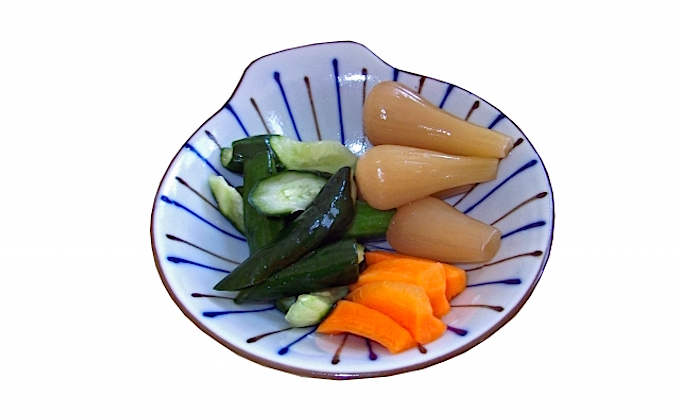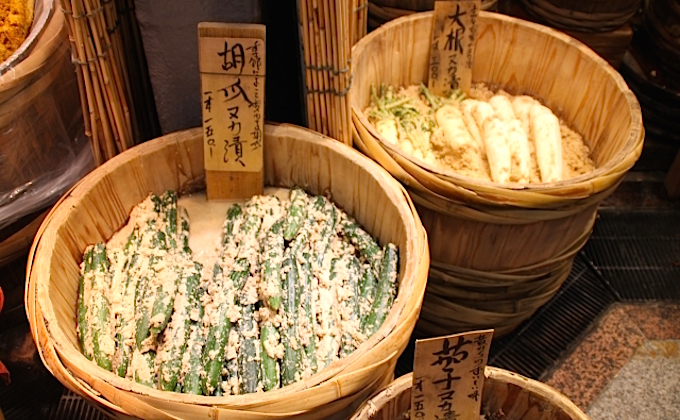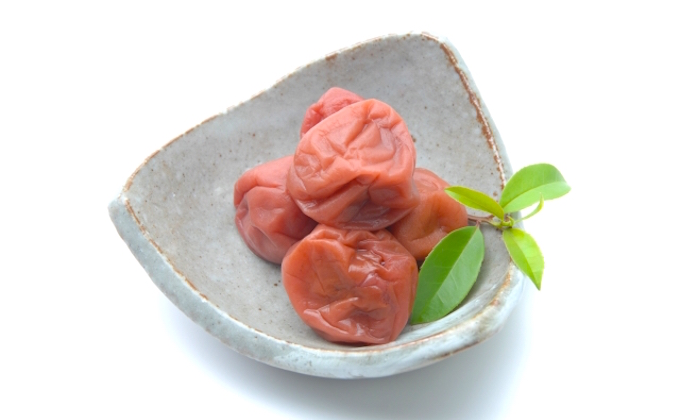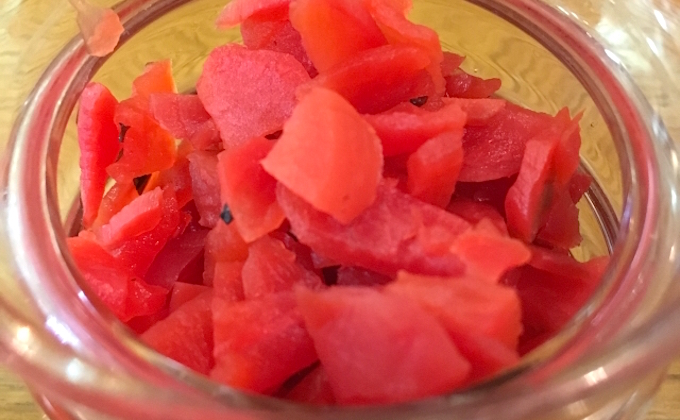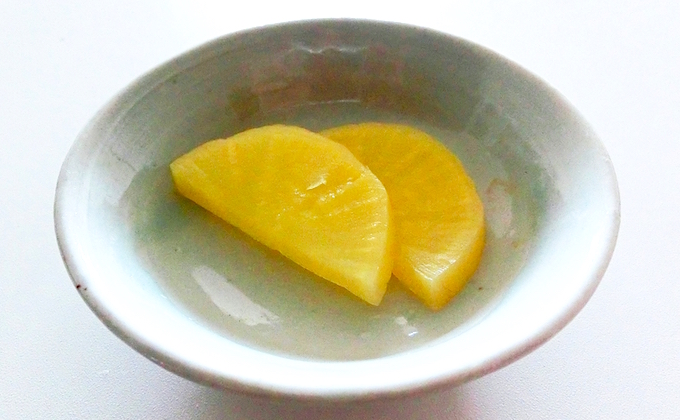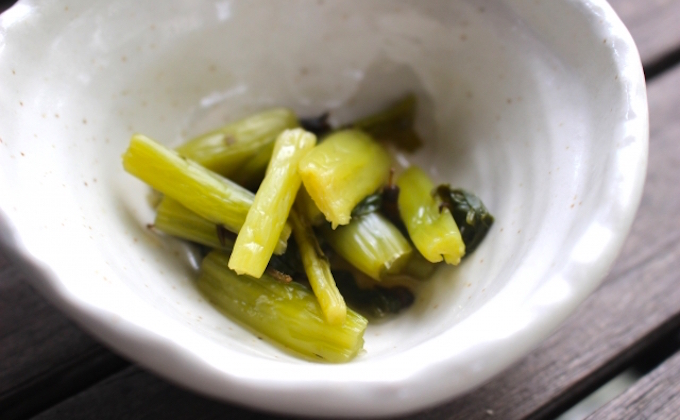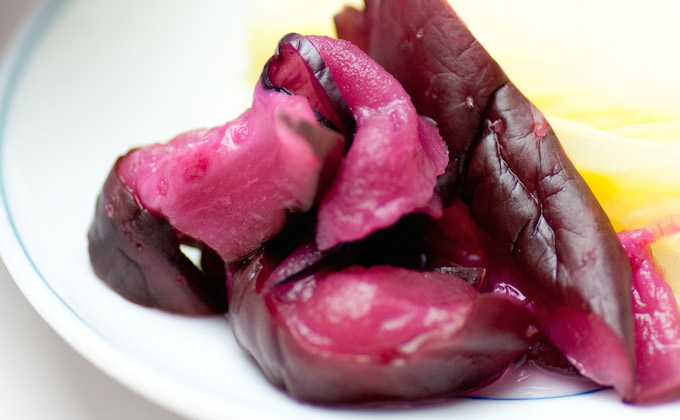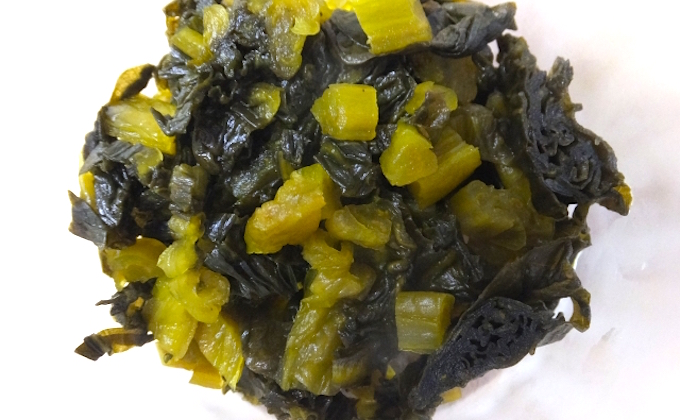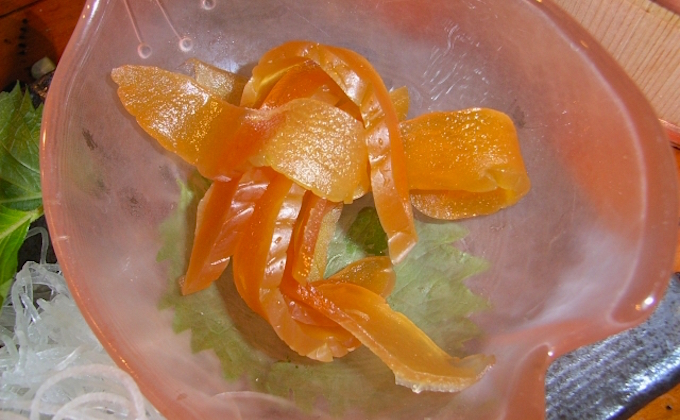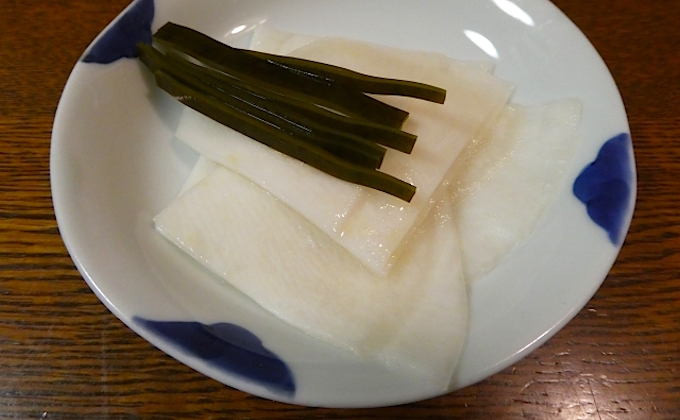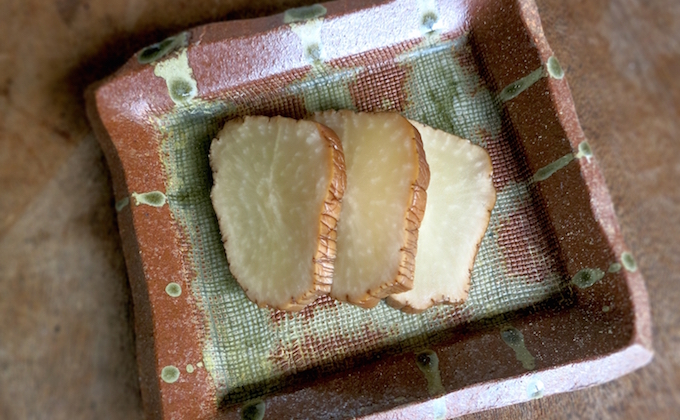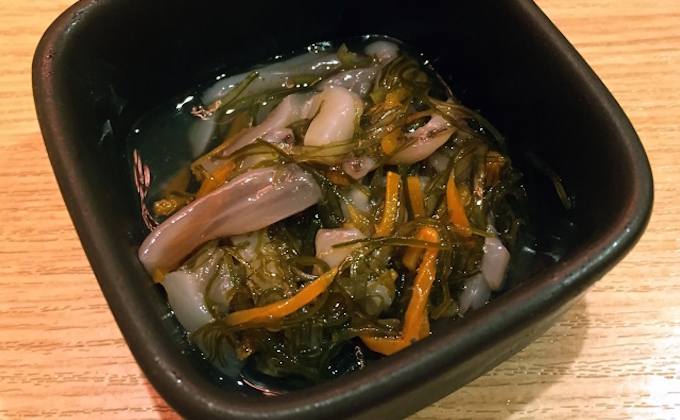TRG Info and Advice
Tsukemono: Japanese-style Pickles
The History of Tsukemono
As Japan is surrounded by the sea, people have been preserving various foods using salt from sea water since ancient times. Vegetables, nuts, meat and fish have all been preserved in this way. By the time of the Yamato Chotei regime (7th Century), pickles (salt-only pickles) were already being made. Wooden tablets with writing and books of the 8th Century make references to pickles such as salted gourd. In the 10th Century, various other preservation methods were developed using seasonings such as soy sauce, miso, sake lees and sake. At that time, salt was both valuable and very expensive, so pickles were only for monks and nobility, not accessible to a majority of common people.
In the Heian Period (794-1185), pickles gradually became common in the daily life of ordinary people and were served as a side dish. During the Muromachi Periods (1392-1573) the fermentation process was developed, resulting in better flavor and taste, and pickles started to be called Ko no Mono (literally: fragrant things). In samurai households, pickles played an important role in cleansing the palate and refreshing the mouth in the middle of lavish meals of meat and fish. As Japanese tea ceremony and the incense-sniffing ceremony developed, pickles were consumed more and more in order to refresh the senses of taste and smell. In the Edo Period (1603-1867), daikon radish, which was originally pickled with millet and salt, started to be pickled using a rice bran paste produced by refining brown rice, and the “takuan” (daikon radish pickle) was created. Books on pickles were published at the time, including various recipes such as short term pickles (toza-zuke) and overnight pickles (ichiya-zuke). There were two distinctive categories of pickles: one made by mixing fresh vegetables with salt, and the other made by salting the ingredients and then desalting (or washing) them before eating (“old” pickles = furu-zuke). This desalting method was perfected by the end of the Edo Period and is unique to Japan, not seen in Europe, China or the Korean Peninsula.
Pickles came onto the market during the Edo Period, but until the end of World War II, only a few varieties, such as umeboshi (pickled ume plum), takuan (pickled daikon radish), bettara zuke (sweet and salty daikon pickle), fukujin-zuke (a mixture of chopped vegetables marinated in soy sauce and sugar) and furu takana zuke (pickled mustard leaves), were sold. The pickle market had not yet developed. After WWII, the Japanese family situation, as well as people’s lifestyles, changed and tsukemono recipes were not passed down from generation to generation as much. Thus, pickles on the market flourished. Plastic packaging, heat sterilization, the development of seasonings, low temperature processing, and the building of distribution channels all helped low-salt pickles made at a low temperature, combined with a growing, national health-consciousness, establish a strong pickle industry.
What are tsukemono?
Tsukemono refers to a type of Japanese preserved food that is made by pickling various items in salt, vinegar, soy sauce, sake lees and others. Through pickling and fermentation, the food can be kept longer and acquires distinctive flavors. Most pickles help stimulate the appetite and play a major role in refreshing the mouth between dishes.
Taste of Home
Pickles are originally a fermented food, and various organisms in nature have an influence on the fermentation process. One of the major organisms is lactic acid, which yoghurt, cheese and butter all contain. Organisms with lactic acid help with both the fermentation process and the transformation into pickles, and play a significant role in the development of flavor. Interestingly, just like we each have our own personality, each type of lactic acid has its own characteristics, too. Lactic acid, therefore, varies from home to home, and affects the resulting flavor of the pickles. The taste of pickles depends not only lactic acid, but all the organisms present in each home. This is why each family has its own original flavor of tsukemono, even if the same ingredients, in the same quantity are used.
Varieties of Tsukemono
Takuan-zuke (pickled dried daikon radish)
Takuan are eaten nationwide. They are made from dried daikon radish pickled in rice bran and salt.
Nozawana-zuke (pickled nozawana)
Nozawana-zuke are a local specialty in Shinshu (Nagano). Nozawana is one species of red turnip. Nozawana-zuke is made by salting the stalks and leaves of the plant before the turnips grow.
Takana-zuke (pickled takana leaves)
Takana is Japanese mustard leaf, which contains slightly pungent components. Takana-zuke are made from takana leaves, salted and fermented through lactic-acid.
Nara-zuke
Nara-zuke are salted vegetables pickled in sake lees. The sake lees are changed several times, until the pickles are ready. They are commonly served as a side to grilled eel, because nara-zuke works as a palate cleanser, and refreshes your mouth in order to counter the eel’s heaviness.
Senmai-zuke
The name senmai-zuke refers to the way the turnips are cut paper thin, into many slices (sen mai means: a thousand slices). Senmai-zuke were originally fermented with lactic-acid and high quality kombu (kelp) so that the turnip’s sweetness, the sourness of lactic acid and the umami of kombu were well-balanced. Nowadays, senmai-zuke are made using sugar, vinegar and other seasonings.
Iburigakko
Vegetables such as daikon radish are dried and smoked over a hearth, then pickled with rice bran and salt. Iburigakko features a smoky, savory taste.
Matsumae-zuke
Matsumae-zuke are seafood pickles. Shredded, dried kombu (kelp) and dried squid are pickled in a sauce seasoned with mirin (sweetened sake) and soy sauce.
Tamari-zuke
Tamari-zuke are made from vegetables such as daikon radish, cucumber, eggplant and Japanese shallot, pickled in matured moromi essence (the mash from which miso bean paste is made), until the vegetables turn amber-colored. A mature and fermented umami is concentrated in these pickled vegetables, giving them a pleasant, crunchy texture.
Bettara-zuke
Thickly peeled daikon is first salted and pressed with a heavy stone, then pickled with sugar, rice and koji (rice mold). Bettara-zuke has a light, crispy texture with a subtle, sweet flavor.
Tsubo-zuke
Tsubo-zuke are vegetables pickled in a large jar of sea water. Amber colored like takuan, each piece is small and has a very crunchy texture.






